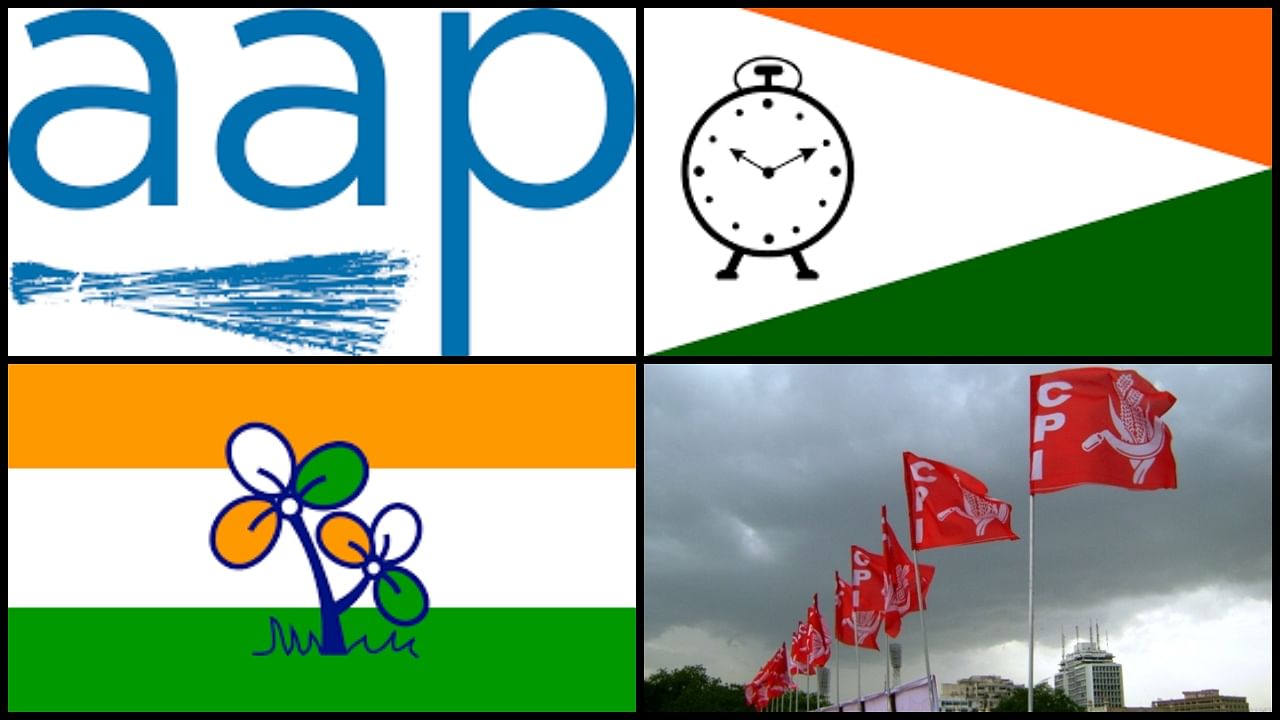
As per the EC order dated 10 April 2023, the Aam Aadmi party (AAP) has been recognised as a national party, whereas the Trinamool Congress (TMC), nationalist Congress party (NCP) and Communist party of India (CPI), have lost their national party status.
Additionally, the CPI has also lost its state party status in West Bengal and Odisha.
The following parties too have lost their state party status: the Mizoram People’s Conference in Mizoram, the People’s Democratic Alliance in Manipur, the Revolutionary Socialist party in West Bengal and the Rashtriya Lok Dal in Uttar Pradesh.
But what criteria does the EC use to recognise parties as either national or state parties?
As per the Representation of People Act 1951, a registered political party can be recognized as either a 'state party’ or a 'national party’. The Election Symbols (Reservation and Allotment) Order, 1968, lays down the criteria for the EC's recognition of a party as a state party or a national party as follows:
Conditions for recognition as a state party – As per para 6A of the said order, a political party shall be eligible for recognition as a state party in a state, if, any of the following conditions is fulfilled:
(i) At the last general election to the Legislative Assembly of the state, the candidates set up by the party have secured not less than six per cent of the total valid votes polled in the state; and, in addition, the party has returned at least two members to the Legislative Assembly of that state at such general election; or
(ii) At the last general election to the Lok Sabha from that state, the candidates set up by the party have secured not less than six per cent of the total valid votes polled in the state; and, in addition, the party has returned at least one member to the Lok Sabha from that
state at such general election; or
Also Read | national party status to AAP in such a short time a miracle, it brings huge responsibility: Kejriwal
(iii) At the last general election to the Legislative Assembly of the state, the party has won at least three per cent of the total number of seats in the Legislative Assembly, (any fraction exceeding half being counted as one), or at least three seats in the Assembly, whichever is more; or
(iv) At the last general election to the Lok Sabha from the state, the party has returned at least one member to the Lok Sabha for every 25 members or any fraction thereof allotted to that state; or
(v) At the last general election to the Lok Sabha from the state, or at the last general election to the Legislative Assembly of the state, the candidates set up by the party have
secured not less than eight per cent of the total valid votes polled in the state
Conditions for recognition as a national party – As per para 6B of the said order, a political party shall be eligible to be recognized as national party, if, any of the following conditions is fulfilled:
(i) The candidates set up by the party, in any four or more states, at the last general election to the Lok Sabha, or to the Legislative Assembly of the state concerned, have secured not less than six per cent of the total valid votes polled in each of those states at that general election; and, in addition, it has returned at least four members to the Lok Sabha at the aforesaid last general election from any state or states; or
Also Read | After losing national party status, TMC exploring legal options to challenge EC decision
(ii) At the last general election to the Lok Sabha, the party has won at least two per cent of the total number of seats in the Lok Sabha, any fraction exceeding half being counted as one; and the party’s candidates have been elected to that House from not less than three
states; or
(iii) The party is recognized as state party in at least four states.